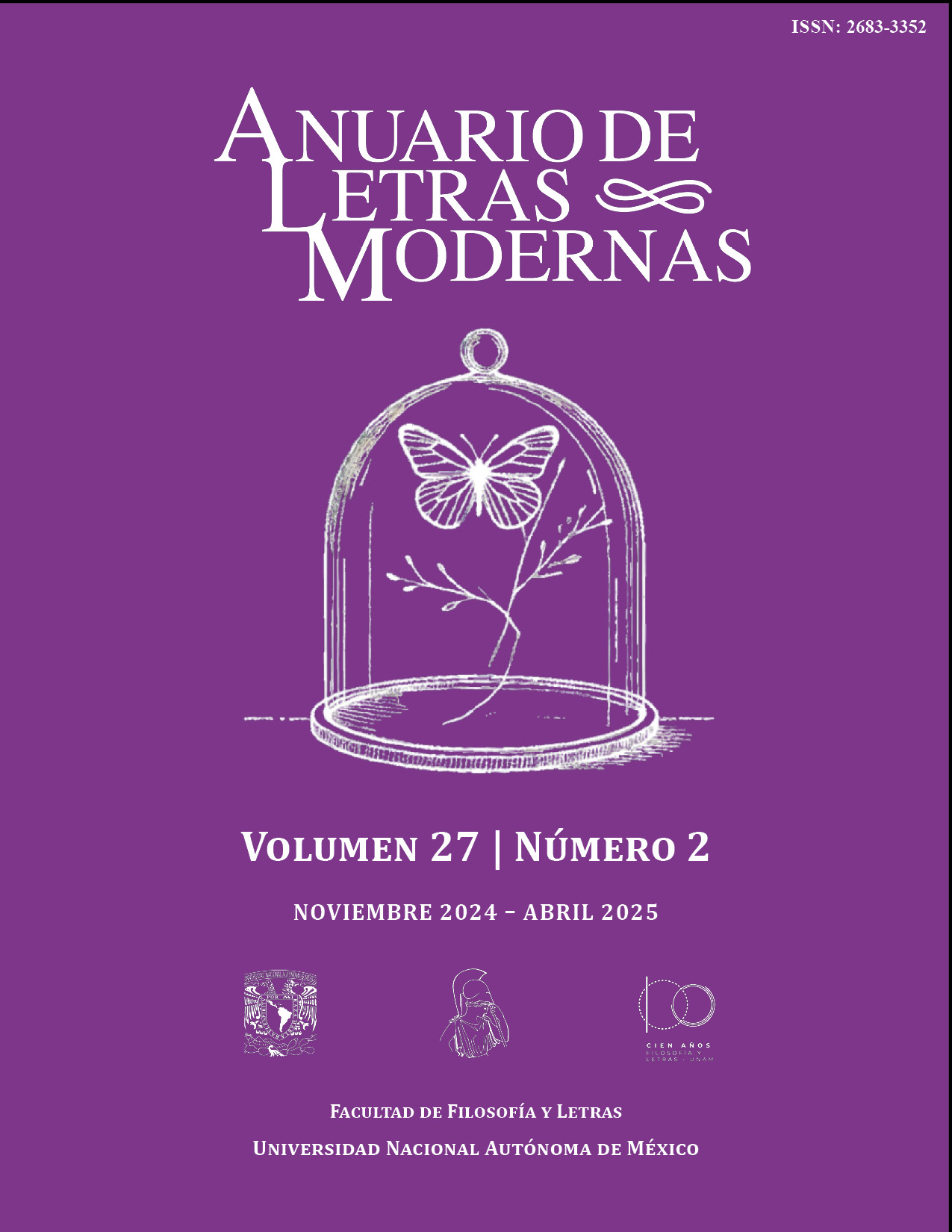The Speculation of the Secret: Secondary, Complementary and Apocryphal Sources of “El idioma analítico de John Wilkins” by Jorge Luis Borges
Main Article Content
Abstract
“El idioma analítico de John Wilkins,” by Jorge Luis Borges, addresses the issue of a universal language, based on the analysis of An Essay towards a Real Character and a Philosophical Language by Wilkins. However, the essayist does not have access to the original source, so he uses others to compensate for the absence of the main one to write the essay. In total, “El idioma analítico de John Wilkins” has twenty references; this article investigates, analyzes, and comments on these sources. For this purpose, this paper begins with a personal classification of sources (secondary, complementary and apocryphal) to describe their function and show the way in which they constitute the essay. In the absence of Wilkins’ text, the essayist indicates that he will consult four books, which I call secondary sources, but later, adds a dozen complementary. Finally, apocryphal sources stand out from the rest. Despite their apparent “false” nature, they speculate on the secret order of things, unlike the secondary and complementary sources, which have an illustrative or contrasting function. This article also shows how the essayist takes examples, passages, information, and ideas from various sources, regardless of their origin or nature, as long as they are relevant to the purpose of the text.
Article Details

This work is licensed under a Creative Commons Attribution-NonCommercial-NoDerivatives 4.0 International License.
References
ALAZRAKI, Jaime. (1997). “Conversaciones con Borges sobre la Cábala. Entrevista inédita de 1971”. Variaciones Borges: revista del Centro de Estudios y Documentación Jorge Luis Borges, (3), 163-176. https://dialnet.unirioja.es/servlet/articulo?codigo=2454137
BORGES, Jorge Luis. (1952). Otras inquisiciones (1937-1952). Emecé, Buenos Aires.
BORGES, Jorge Luis. (1974). Obras completas. Emecé, Buenos Aires.
BORGES, Jorge Luis. (2007). Obras completas, (Vol. 4IV). Emecé, Buenos Aires.
BORGES, Jorge Luis.; DI GIOVANNI, Norman Thomas (1999). Autobiografía 1899-1970 (Norman Thomas Di Giovanni, Ed.). El Ateneo, Buenos Aires.
CHESTERTON, G. K. (1904). G. F. Watts. Duckworth & Co.-E. P. Dutton & Co., Londres-Nueva York.
The Encyclopaedia Britannica (11th ed., Vol. 28)., The (1911). 11a. ed. 29 vols. The Encyclopaedia Britannica Company, Nueva York-Londres.
FOUCAULT, Michel. (1966). Les motes et les choses. Une archéologie des sciences humaines. Gallimard, París.
HELFT, Nicolás. (1997). Jorge Luis Borges: bibliografía completa. FCE, Buenos Aires.
HOGBEN, Lancelot. (1939). Dangerous Thoughts. George Allen & Unwin Ltd, Londres.
HUME, David. (1960). Dialogues concerning natural religion. Hafner Publishing, Nueva York.
KOGAN, Herman. (1958). The Great EB. The story of the Encyclopaedia Britannica. The University of Chicago Press, Chicago.
LEIBNIZ, Godefroy-Guillaume. (1703). “Explication de l’arithmétique binaire, qui se sert des seuls caractères 0 et I avec des remarques sur son utilité et sur ce qu’elle donne le sens des anciennes figures chinoises de Fohy”. Mémoires de mathématique et de physique de l’Académie royale des sciences. Consultado 14 de mayo de 2024. https://hal.science/ads-00104781/document
MALLET, James; WILLMOTT, Keith. (2003). “Taxonomy: renaissance of Tower of Babel?” Trends in Ecology & Evolution, 18 (2), 57-79.
MATA, Pedro. (1862). Curso de lengua universal. Lecciones dadas en el Ateneo Científico y Literario de Madrid en 1861. Librería de D. León Pablo Villaverde, Madrid.
MAUTHNER, Fritz. (1910). Wörterbuch der Philosophie. Neue Beiträge zu einer Kritik der Sprache, Vol. II. Georg Müller, Munich-Leipzig.
OTLET, Paul. (1934). Traité de documentation. Le livre sur le livre. Théorie et pratique. Mundaneum, Bruselas.
PANKHURST, E. Syvia. (1927). Delphos. The future of international language. The Bowering Press, Londres.
SOTOS OCHANDO, Bonifacio. (1860). Diccionario de Lengua Universal, precedido del resumen de su Gramática, y seguido de varios apéndices muy importantes. Imprenta de J. Martín Alegría, Madrid.
STRICKLAND, Lloyd; LEWIS, Harry. (2022). Leibniz on Binary. The Invention of Computer Arithmetic. The MIT Press, Cambridge, MA.
TORO, Alfonso de. (1999). “Borges/Derrida/Foucault: Pharmakeus/Heterotopia o más allá de la literatura (‘hors-littérature’): Escritura, fantasmas, simulacros, máscaras, carnaval, y… Atlön/Tlön, Ykva/Uqbar, Hlaer, Jangr, Hrön(n)/Hrönir, Ur y otras cifras”. Jorge Luis Borges: pensamiento y saber en el siglo XX, eds. Alfonso de Toro y Fernando de Toro. Vervuert-Iberoamericana, Frankfurt, 139-163.
“WILKINS, JOHN”. (1911). En The Encyclopædia Britannica (11a ed., vol. 28, p. 646). The Encyclopaedia Britannica Company
WRIGHT HENDERSON, P. A. (1910). The Life and Times of John Wilkins. Warden of Wadham College, Oxford; Master of Trinity College, Cambridge; and Bishop of Chester. William Blackwood and Sons, Edinburgh-Londres.

